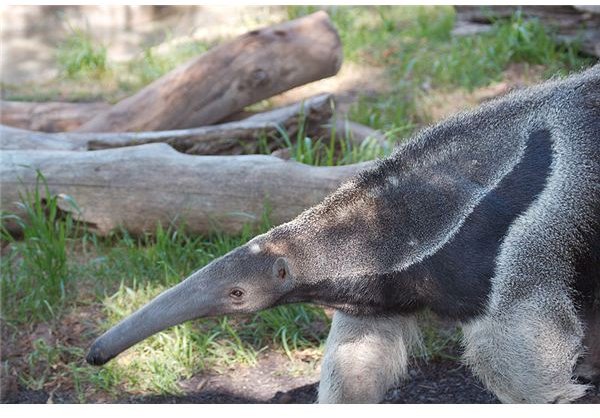Giant Anteater: Characteristics, Diet, Reproductive Habits, Lifestyle and Endangered Species Status
Largest Species of Anteater
The Giant Anteater (Myrmecophaga tridactyla) is said to be the biggest species of anteater and it is also said to be the only species of the Myrmecophaga genus. This animal can be found in South American and Central America. It is solitary and mainly inhabits rainforests, grasslands and deciduous forests.
Description, Diet, Behavior & More
The Giant Anteater has no teeth, instead it has hard growths located in its mouth. It has very stiff, straw-type hair that can grow up to 40 centimeters in length on its tail. These animals are typically brown or gray in color and have a diagonal stripe on their shoulder that is white and black. The Giant Anteater typically grows to be six to eight feet (this includes their torso and tail which is typically three to four feet) and they usually weight anywhere from sixty-five pounds to one-hundred and forty pounds. They possess a keen sense of small, but they are believed to have poor hearing and sight.
The Giant Anteater typically eats ants and termites and they will sometimes eat approximately 30,000 ants and/or termites per day. Their tongues can be as long as two feet allowing them to get more insects with each attempt. They also tend to completely cover their tongues with a very sticky saliva so that the insects they are attempting to eat are literally trapped and they can extend and retract their tongues an average of 150 times every minute.
Giant Anteaters do not have a specific shelter, they tend to find abandoned hollows and burrows when they are tired to curl up in. They tend to be nocturnal when they are close to human populated areas, but when they are in areas that are not populated by humans they are diurnal. When sleeping they use their tails to cover themselves for warmth and protection.
Giant Anteaters do not actively prey on humans or other animals, but they will defend themselves against them when they feel threatened. If a Giant Anteater feels threatened they will stand up on their hind legs and quickly strike at its attacker with its claws similar to the way a bear stands and attacks. These animals can and have killed those who prey on them.
Giant Anteaters are capable of breeding every nine months, but they often go longer. They can breed year round, but they will typically breed seasonally depending on what region they are in. Female Giant Anteaters usually give birth to one baby at a time and weening typically takes six months, gestation typically takes 190 days and Giant Anteaters usually reach independence at twenty-four months of age.
The Giant Anteater is not considered to be in danger of extinction, but they are listed by the CITES as an Appendix II. There is an estimated 5,000 Giant Anteaters left in the wild. There are also only 90 of these animals living in zoos throughout the United States.
